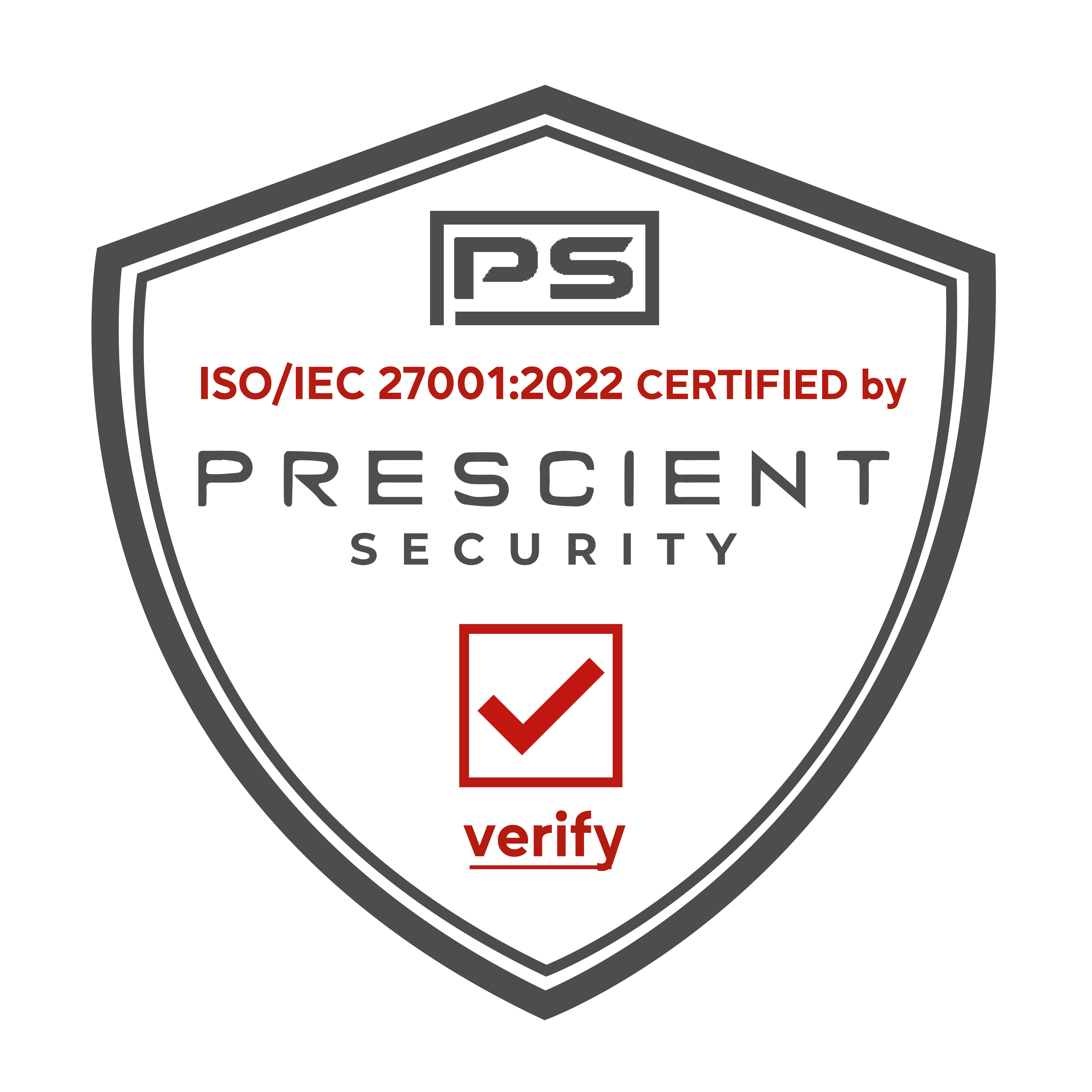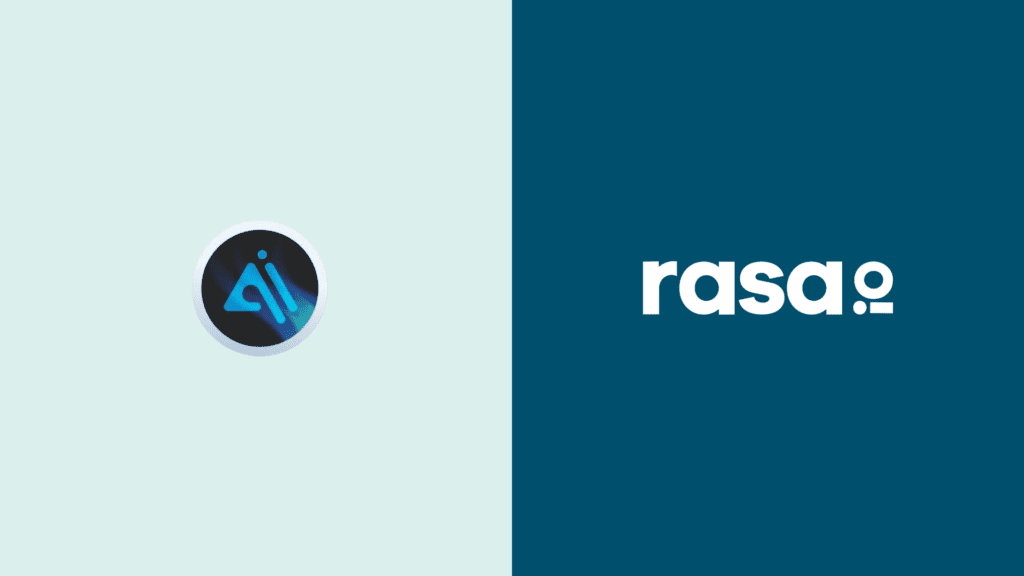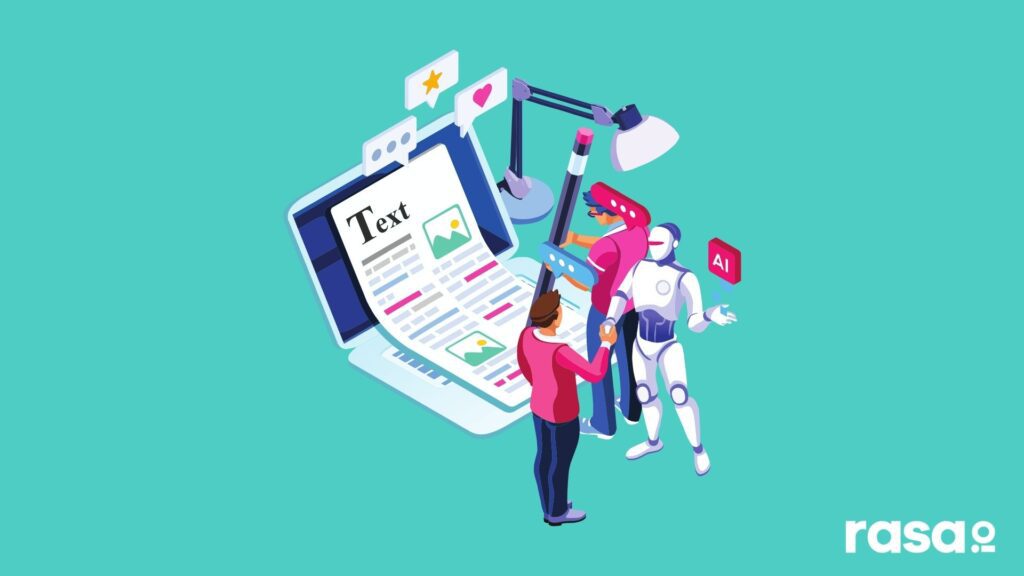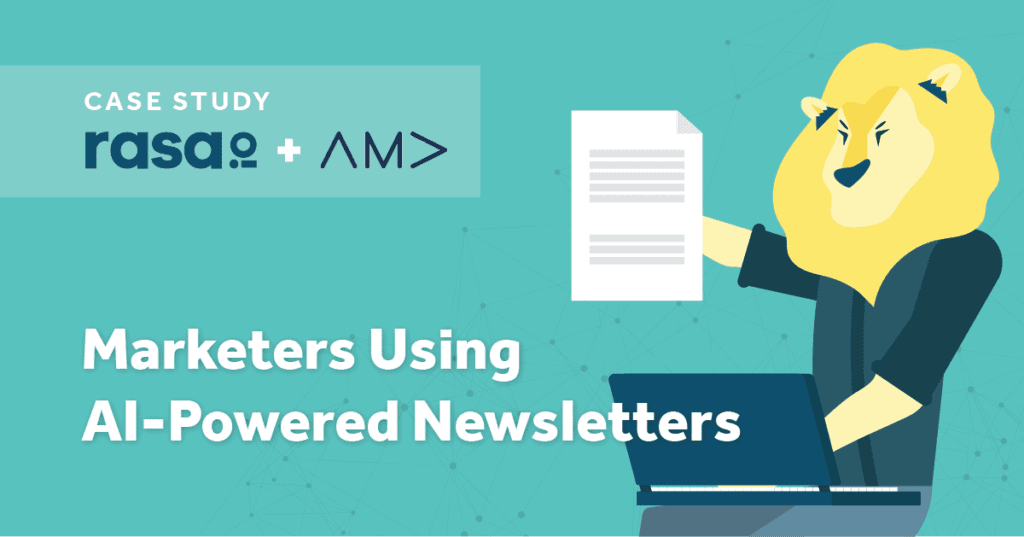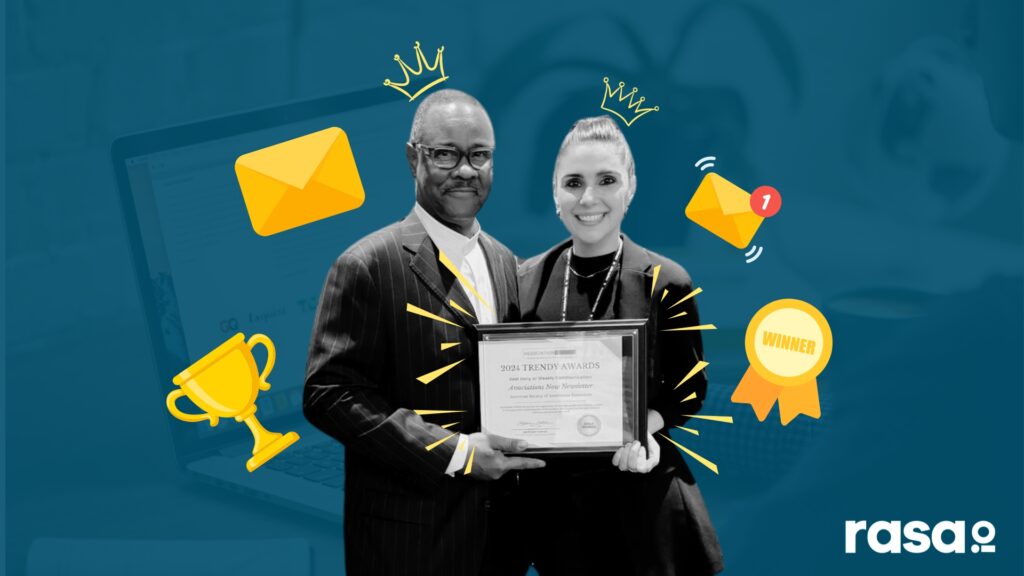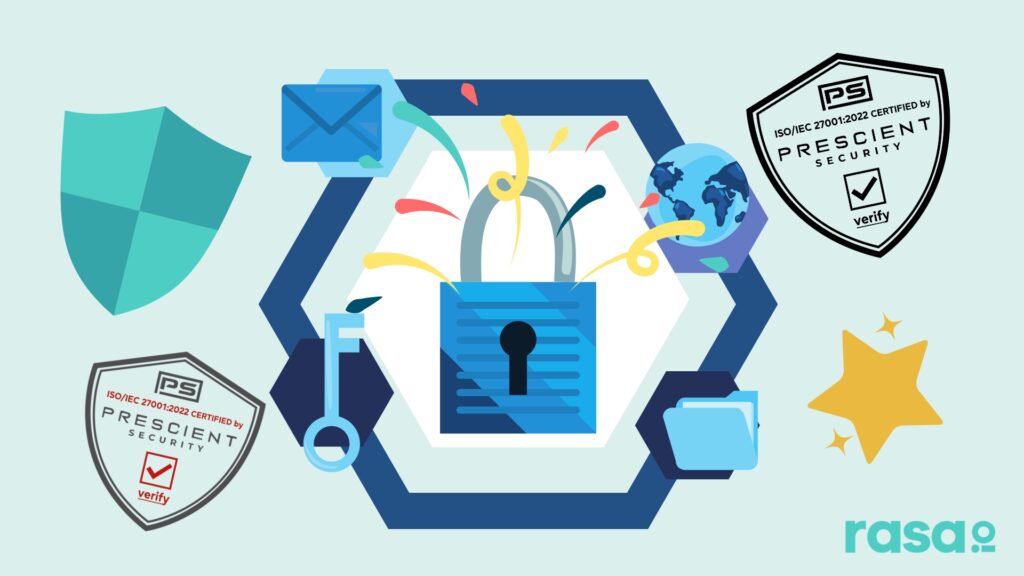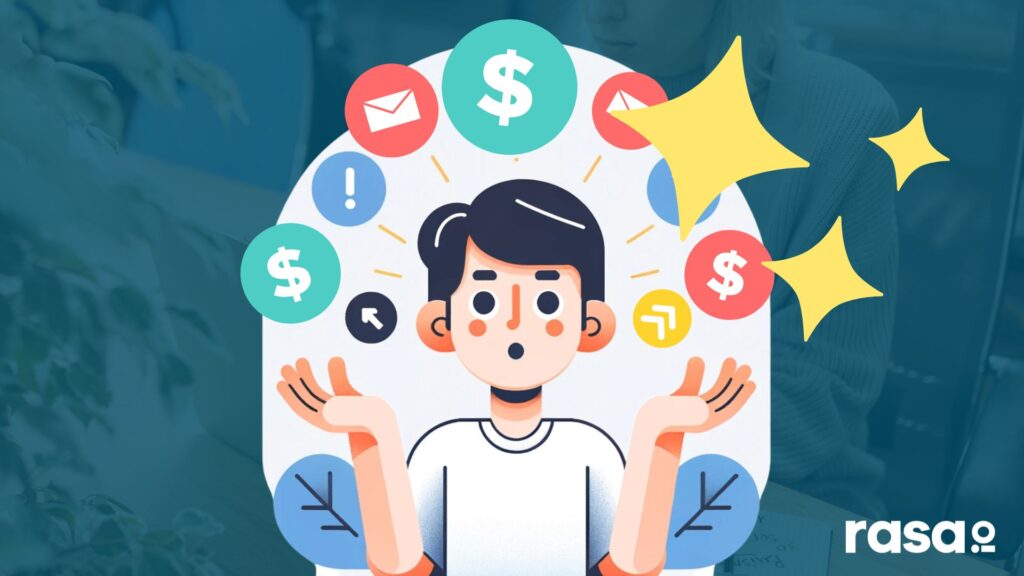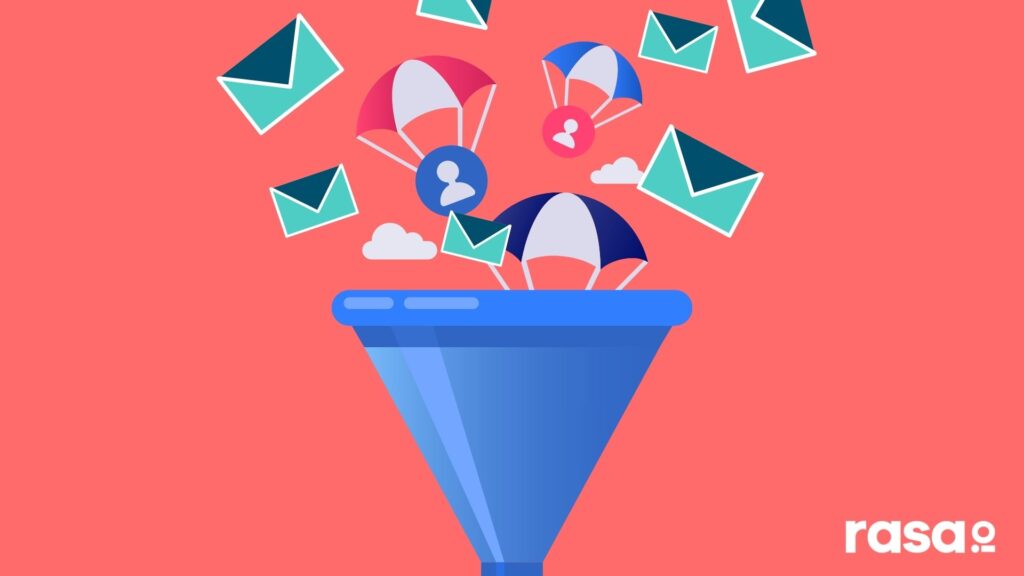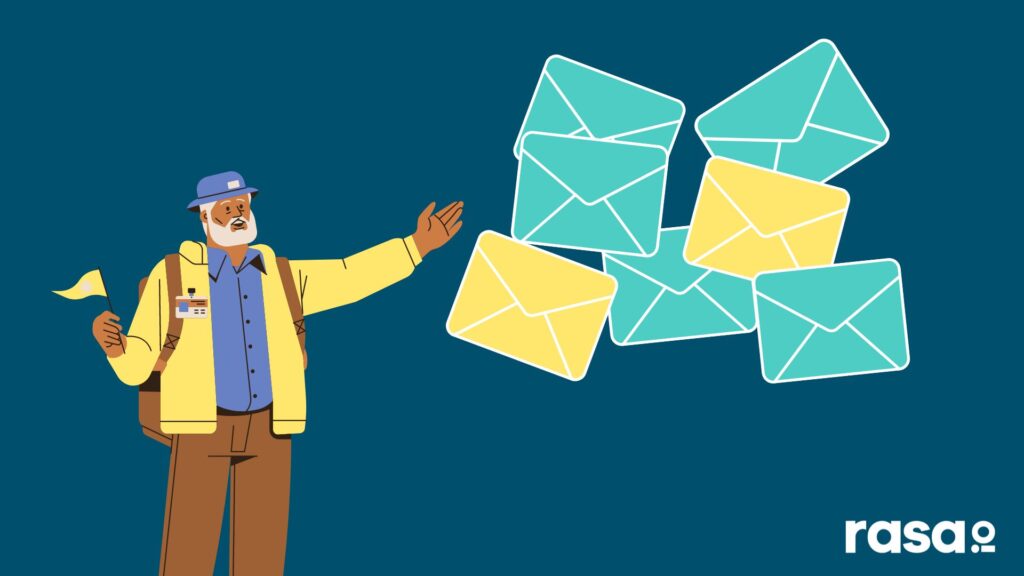Ryan Jenkins
How one generational expert used email to grow his business. Plus what he’s learned about generation Z and email. This is Ryan Jenkins’s story about Pushing Send.
Ryan Jenkins is a professional speaker and generational expert. He has been a keynote speaker for clients such as State Farm, Salesforce.com, and The Home Depot. He has been featured in Forbes, Fast Company, The Wall Street Journal, and SUCCESS Magazine.
Key Points From This Episode:
- Email has been the bedrock for Ryan’s business and he feels like it is here to stay for a while.
- Ryan doesn’t use pop-ups or opt-ins on his website because he hasn’t been looking to grow a massive list, because his audience is small, but now that he is publishing his third book, he does wish. that he had a larger list.
- When speaking at events, he asks for email addresses in a variety of ways and he shares how and what tools he uses.
- Ryan talks about how he serves two different audiences at the same time and what he hopes everyone does who lands on his site.
- Ryan shares the resources he’s used to learn about email during his career.
- Gen Z is now moving into the workplace and you’ll be surprised to see how they prefer to communicate. He also digs into some tools that are now being used to interview job candidates.
- It is important to start helping Gen Z to experience connection and how to leverage technology in the best way possible, but also looking for those unique moments to stay connected with one another.
Tweetables:
“I’m constantly trying to figure out how do I make this effortless and seamless for the audience and what can I add? What can I give them that’s going to be super valuable and just make it as easy for them to engage with as possible?” – @TheRyanJenks
“I don’t really differentiate between who it is. I’m trying to drive them towards the, the contact form where I can also flush out some more of the details and I can evaluate if this is a legitimate lead.” – @TheRyanJenks
“72% of generation Z want to communicate via face-to-face at work. And that blows people away. And that’s according to our research and other research has it as high as 75%.” – @TheRyanJenks
“We have to keep a very watchful eye on Gen Z and help them right. Start helping them to experience what that is and how to leverage technology in the best way possible, but also looking for those unique moments to stay connected with one another.” – @TheRyanJenks
Links Mentioned in Today’s Episode:
Episode Transcript
Ryan Jenkins:
I try to be as, as on top of all of the new marketing trends as I can be as an entrepreneur. And of course, email is so front and center and I tried the sequences for a bit and they worked to an extent, but I also always just been very detailed oriented as far as, because so much of the email is really just me. I don’t have a virtual assistant or anyone that really handles my email. It’s always just me. And so I found ways to scale it personally, and that’s just through a lot of different templates and, you know, massaging certain wording and just knowing what to say at what point and how to move conversations forward.
Bryan Kelly:
From rasa.io, the tool for sending smarter and better email newsletters. This is Pushing Send, a show featuring people who send emails, their subscribers actually want to read. I’m Bryan Kelly, and on today’s show how one generational expert used email to grow his business. Plus what he’s learned about generation Z and email here’s Ryan Jenkins. You work in a very specific niche, and I’m curious, how important has email been for the growth of your business?
Ryan Jenkins:
Yeah, email’s always been front and center for me and I appreciate technology and how it can help me to move faster. Um, so I’m always been testing different forms of communication and how I could speed things up or scale things, but it’s never seemed to go beyond email. It’s just kind of this tried and true communication, medium that all of us are familiar with. And so it’s just, it’s just been a bedrock for my business. And I do a lot of speaking and helping organizations think about the future of work and we talk a lot about communications and I’m always pulling audiences on what their preferred channel of communication. And it varies depending on the average age of the room, it depends on industry, but usually I’d say seven to eight out of 10 times that I’ll I’ll do it. Face-to-face communication is always top. And then usually email is second. And then people are as asking me, well, is email ever going to go away? While it’s so helpful, And we use it constantly, right? I mean, there’s is this opposite side of the email where it’s, it can be the bane of our existence and we spend all day in our inbox, right? And it can be just a nightmare at times, but at the end of the day, it’s, it’s tremendously helpful and the benefits outweigh the, the hardship and we’ll continue to move forward with it. And I think why email is here to stay for quite some time now is, you know, we use our email IDs for most of our internet lives, right? If we’re logging into a social platform or signing up for e-commerce or whatever it might be, we’re always using our email addresses. So that’s kind of like our key card to the rest of the internet. So I think is going to stick around. Of course, there’s all these other tremendous options that are at our disposal, but emaill’s going to be sticking around. And for me personally, it’s been tremendous to grow my business, sustain my business and yeah, it’s here to stay
Bryan Kelly:
Now. What if you didn’t have email, like no email list, no ability to communicate with people eat with email.
Ryan Jenkins:
Yeah. I’d probably, uh, run around screaming for a little bit. Yeah, I, that’s a great question. I don’t think I’ve ever thought about that. I mean, of course my business, I use Slack to communicate with a lot of my colleagues and partners. We also of course do texting, but that’s usually I’ll text my clients when the relationship has evolved. And then obviously doing phone calls or video conferences, but usually that’s all set up the, uh, email take away email. And boy, that would be really challenging. I think probably if email, all of a sudden just disappeared. I think probably where I’d spend my time focusing would be LinkedIn. I’ve seen my communications grow on LinkedIn and people tend to be using that platform as a way to message much like email. But even for myself, if I go on LinkedIn, I will ultimately, if the conversation starts going in the right direction, I’ll ultimately ask that individual, if I can have their email and then I’ll try to transition the conversation to email just because LinkedIn is noisy and if I send a message to them on LinkedIn there might not see that message. And so email is while emails is also noisy, as well. I do feel like it’s less noisy. There’s less things to look at or get distracted by in, in your inbox. If email disappeared, I’d probably move towards LinkedIn. Obviously wouldn’t be able to grab their email, but I would start massaging that and probably using that as a, as a way to then transfer that relationship to a phone call to a video call to a potential, uh, in-person meeting, et cetera. So that’s what I do, but I wouldn’t be happy about it, Bryan.
Bryan Kelly:
Yeah, I can understand. So I’ve noticed on your website, there, isn’t a big call to action to sign up for your newsletter or even an exit intent pop up to capture email addresses when people are about to leave the site, but you do have a lead magnet on your blog and in some other places, was that an intentional choice on your part?
Ryan Jenkins:
I definitely have some, I know there’s always room for improvement there and I don’t probably don’t do it as best as I can, but for me, most of my buyers and my clients are folks that are looking for a speaker or a trainer. And so usually they’re ones that are landing on my website through different ads that I run online or it’s word of mouth. And so they’ll land on my page and hopefully get a good sense of, of what I can deliver, my expertise, et cetera. So yeah, I try not to clutter too much with any pop-up boxes or opt-ins. And I do have certain lead magnets that folks can sign up for and get whether it might be certain sections of my books or other resources. But for me, I’m not necessarily looking to build a massive email list to sell my speaking services because there’s only a handful of folks that are booking events or within organizations that are looking for folks that have the skillsets that I have. And so that’s never been a huge primary focus, but I will say I’m in the throws of writing my third book and all of a sudden now I’m wishing I had all of that, those that large email list and had been asking or put in a little bit more thoughtful about capturing folks emails so that I can then lean on that as we begin to roll out the promotion for the book. So that’s likely not going to happen until 2022. So if nothing else, this conversation will be a good reminder of why I need to prioritize that and begin to methodically develop and build out my email list because it hasn’t been as top of mind, just because of the nature of who is buying my services.
Bryan Kelly:
As a professional speaker, I was wondering, have you used the stage as an opportunity to grow your email list and then offer resources around the topic of millennials and generation Z in the workplace?
Ryan Jenkins:
Yeah, I feel like I’ve tried everything. Currently. I use HubSpot on the back end for my CRM and for a while there, I was using just kind of a very simple HubSpot form where folks could visit a custom link, you know, towards the end of my presentation and give me some feedback. I was wanting, you know, genuine feedback of what topics they wanted me to go deeper on what really stood out and then would they consider having me back or having me speak at their organization. And then of course through that survey would be capturing email addresses. So that was one way I did it. And then for awhile there was also using a service called simple texting, I believe it was called. And so it was just a keyword that folks could text into and then I would then push them a link to go download the slides or whatever else, other resource I was interested or had prepared for them that would be kind of a value add to my presentation or speech. And then through that process would be sharing or capturing emails, as well. At the end of the day, I feel like the most of the time I get the most reaction or I can get the biggest response. If I simply just ask folks to send me an email and just put in the title of the subject line of the email and just say slides, then I personally will then just respond with the download to the slides that we covered that day. And I typically, if I’m speaking to a larger group of a thousand plus, I’m not going to do that. So I don’t, I’m not buried in inboxed. I might do something a little bit more automated and I’m constantly trying to figure out how do I make this effortless and seamless for the audience and what can I add? What can I give them that’s going to be super valuable and just make it as easy for them to engage with as possible. And as silly as it might sound, like, just send me an email with the title of slides and that way actually it’s, they’re sending me up to me personally and I respond to all of them and I’m able to actually kind of have a little bit more of a dialogue in that instance than if I’d had a HubSpot survey or if I had a simple texting. And then I also do a lot of live polling in my sessions too. And I’ve thought about how do I integrate potentially a survey in that? And so, yeah, I’ve tried them all, but I think it seems like the most basic of them all is just been asking them to email me directly. And I tend to get the most responses when that’s the case.
Bryan Kelly:
When we come back, Ryan describes his approach to connecting with two of his segmented audiences. Plus he explains insights he’s learned about what Gen Z, the fastest growing generation in the workforce right now thinks about email. I’m Bryan Kelly, and you’re listening to Pushing Send from rasa.io.
rasa.io:
Creating email newsletters takes a lot of time. You might curate articles, write content, tweak your template, and look up metrics. And not to mention, you’re probably doing all of this once a week. well at rasa.io, we said enough and built a free tool to simplify the process, which saves you time. It also uses AI to personalize emails for each subscriber based on their interests. That means they get stuff they like to read. Want to see how it works? Visit www.rasa.io and click how it works.
Bryan Kelly:
Welcome back to Pushing Send. I’m Bryan Kelly. Ryan Jenkins is an expert with a very specific focus and niche. And he’s learned a few things about the best way to attract and appeal a couple of different audience segments. He’s also uncovered some interesting research about email as it applies to generation Z. Here’s Ryan telling me more about this. You mentioned earlier the focus on your website being for event organizers looking to hire you for speaking gigs, but then you have people who have heard you speak and might be interested in your books, podcast, or anything else that you’ve got as a resource. How do you think about serving both audience segments?
Ryan Jenkins:
I’m constantly trying to put myself in the shoes of folks that are, that are interested in my services and that are land on my website. And it’s, I’m trying to have a very clear and simple call to action. And so if someone, if a potential buyer lands on my website, I mean, the clear thing I want them to do is fill out that contact form with more details about what they’re interested in. I mean, I don’t necessarily want them to sign up to get additional resources or join anything else. I want all of my efforts to drive towards booking, essentially a phone call with me to explore how we might partner together. And so whether that’s learning and development specialists inside a large organization, or whether that’s an event planner, it’s kind of the same thing. I want them to fill out the contact form so they can give me a little bit more detail about the event. And then from there, I’m emailing them directly with whether or not I’m a good fit, whether or not I’m available on the date, whether or not I can help them with that topic. So that’s what it looks like. So I don’t really differentiate between who it is. I’m trying to drive them towards the, the contact form where I can also flush out some more of the details and I can evaluate if this is a legitimate lead and how serious they are about bringing me in as the speaker for the event or training.
Bryan Kelly:
Yeah. That makes a lot of sense. Well, where did you learn about the different ways to utilize email?
Ryan Jenkins:
Yeah, I remember I’ll never forget. When I went to college and I started signing up for courses on the college campus or my freshman year. And I remember I remember getting an email address and be like, what is this exactly? And it seemed like everyone else around me knew what was up and what was going on and how to use email. And I was just like, Oh, I have to use this. And this is my new email and this is, this is a thing. And that, and I felt like such a fish out of water. And it was kind of in that moment that I decided that no longer am I going to be behind on this because everyone else seemed to know how to use it and it was very functional for them. And to me, it was just like I’d spent, I guess too much time on my super NES and not thinking about email or using the computer. So I kinda made a decision in that moment, like, all right, I’m going to stay on top of this and make sure I’m not left behind again. And so that was probably the first seed, but from there it’s just been, yeah, I mean, HubSpot, when I decided to have them be my provider for, from a CRM perspective, they, they have a tremendous library as far as learning on how to leverage email in your business. So that was a big piece. And then it’s always just been, Hey, I don’t know how that works. Let me just Google that. And there’s just, there’s just endless resources out there about what you can do. And it’s always just been piecing it together and trying to figure out other ways. I tell a lot of my audiences and clients at times, like if there is, if there is a friction, there’s a rub in your daily activities, there’s likely a technology solution that can ease that pain. And it’s just a matter of trying to figure out what it is. And so, yeah, it’s just been article after article, after blog post, after blog post, after HubSpot’s big training library. And then I’ve always just been a student. Like whenever I receive a marketing email from someone, whenever I receive a well worded email, that’s clear that drives me into action. I’m always a student of what was it in that email and how was that positioned that made me want to interact or want to execute on the action they were requesting. And so I’ve just always been a student of how that looks and feels and trying to replicate that on my end as well.
Bryan Kelly:
Hmm. Yeah. That’s really good. Well, is there anything you’ve uncovered through your work at the intersection of email and younger generations in the workplace? I think this could be pretty fascinating.
Ryan Jenkins:
Yeah, absolutely. Yeah. It’s really fascinating terrain. And what surprises, most people specifically, you, weren’t talking about generation Z and for those folks that don’t know who generation Z is, they’re the youngest generation and they’re the generation that’s now coming into the workforce and they will be the fastest growing generation in the workforce in the next decade. And right now in 2021, they will be, the age range will be 6-23. So they’re a lot older than many think and they’re in the workplace and they’re going to be coming in at, are at a rapid rate and so the, the research around how they want to communicate is really fascinating. And if you’d asked most other generations that are older of Gen Z, you ask them, how do you think this generation wants to communicate when they’re at work? Most of them will tell you it’s some digital format, right? It’s either text or instant messaging or some kind of like social collaborative tool like Slack, but that’s actually not correct. 72% of generation Z want to communicate via face to face at work. And that blows people away. And that’s according to our research and other research has it as high as 75% of Gen Z want to communicate via face to face. Now, um, especially on the other side of the pandemic face-to-face could mean something very different, especially to Gen Z, but of course, to all of us, right. Face-to-face might mean via zoom. It might mean via FaceTime. For most of us, we define face-to-face is eyeball to eyeball in the same room together, but that’s very jarring for a lot of people because they think Gen Z, Oh yeah, they’re there, they’re the true digital natives. They’re going to be fully digital. And that’s just not the case. They are screaming for more in-person connection and for more those face-to-face conversations. And so what people have to start thinking about is how do we deliver the high tech that they obviously are going to expect while weaving in the human elements that they crave. Whether they’re telling you they want them or not, they’re craving those very human elements because we’re all human at the end of the day, these aren’t some cyborgs, they’re still humans and we are social and relational creatures. And we just can’t duplicate that human interaction. And for Gen Z, they’re a very, very lonely generation. They’re the loneliest generation, actually, even though they’re the most connected, they’re often times the most disconnected. And so, yeah, these are all things that we gotta be thinking about. And so it’s the idea of being high tech, but also high touch being high tech, but also high touch. How do we start emphasizing that and really making that connection and making that tough balancing act as it relates to communication, especially with Gen Z. And then a good example here, Bryan is, especially as it relates to communication and even using email in pre pandemic, a lot of my clients were in the retail space and they hire a lot of Gen Z ers to come work in their different facilities or retail locations. And they were hiring a lot of Gen Z ers. And so they would have, you know, post jobs and Gen Z would express interest and then their recruiters would either call or email the Gen Z candidates. And what do you think happened when they called or emailed the Gen Z ers, zero response? You’re right. They didn’t respond to phone calls. They weren’t responding to email and they’re pulling their hair out, thinking we have a job, you expressed some interest. Why aren’t you picking up the phone for responding to email? And, you know, to overcome this, we’ve suggested a tool called canvas, which is the world’s first text-based interviewing platform. And so how canvas works is actually the entire first interview happens solely via text message. And I can see a lot of different audiences glazing over at this point, right? They can, you don’t have a job interview via text. The kind of the moral of the story here is it’s no longer is that about how you want to communicate as the communicator. It’s about how the communicate T’s best suited to receive that information. So if I have some really important information and I email it to a Gen Z or, and if they’re not as likely to open that email, I might want to think about using a different form of communication to reach that individual in this case, texting worked. And so our clients have seen an 80% increase in response rate. And so it’s, it’s just more about creating the relationship, establishing the connection first and foremost. And then folks can, you know, these specifically, these recruiters can move the conversation to an email, or they can move the conversation to a video interview, or they can eventually move into an in-person interview. But yeah, we’ve all got to be a little bit more flexible and agile in our communications because there are more communication channels than ever before. And we’ve got to just be a little bit more flexible. We’ve got to help people understand how we prefer to communicate, but then also be extremely flexible on how other people are likely to communicate. And generations is a great tool because they give us clues. They give us clues on how that generation is likely to respond, come back to email emails still. I think just the best common denominator across all generations, right? And eventually I think as Gen Z comes into the workforce, yes, they’re going to be relying a little bit more on Slack and some of these other collaborative tools, but I think they’re still going to be settling in and B going to be using email much more than they anticipated before entering the workforce.
Bryan Kelly:
What do you think is driving Gen Z to what this face-to-face interaction and communication?
Ryan Jenkins:
There’s a lot of interesting dynamics at play here. And, you know, I like to think of it, you know, millennials when they were coming into the workforce, you know, still it’s huge digital revolution, you know, the internet and tech, mobile technology we’re converging. And a lot of us were just all in because it made our lives easier. We were able to communicate faster and more frequently. And so we kind of went all in on digital. And now I think we’re starting to see that, okay. Yes, we’re able to now, or at least hopefully attempt to try to manage the technology and not have the technology manage us. And I don’t think Gen Z has had a really good example because all these devices are really new to the, to the timeline of humanity, right? And these are really new and we are still trying to figure out how these things are disrupting our lives, how we can best use them to facilitate better connections and move our businesses and organizations forward, but they are still so new. And I don’t think Gen Z is really had a good example of, of what it looks like to effectively manage technology and not have it overwhelm them, especially with, with social media, whether they know it or not. There’s this subtle outcry that they’re wanting these deeper connections. And when the alternative is less compelling, we will retreat to our devices. That’s true of all of us, right? I mean, as humans, our brain lights up when we engage with our devices. So when the alternative is less compelling, we’re going to retreat to our devices. And so we are on the kind of the precipice of, of leaders and organizations and business owners and entrepreneurs. We have to start creating more compelling alternatives that draw people’s attention, that drop people away from the devices so that they can connect with people. And so it’s hard to do. And it’s really, you know, I experienced this as a communicator. I stand on stage, I’ve been doing it for close to a decade. Now I’ve never wants to ask people to turn off their devices because to me, that’s, that’s, that’s a utility it’s makes your life better, but we’ve got to manage it correctly and efficiently. So I’ve never told anyone to turn off their devices. I just think it’s on me as a communicator to create better experiences, to create a better alternative, where they intentionally choose to look at me or the slides and the, the event or the content right there in real time, you know, it’s on all of us to start pulling people away from these devices and start creating connections because loneliness is a killer. I mean, it’s proven that loneliness is equivalent to smoking 15 cigarettes a day. And so when we’re in our devices, yes, we’re feeling like we’re connected, but we’re not actually experiencing the health benefits of actually connecting genuinely authentically with the people around us. Why is it happening? It’s easier. It’s easier to retreat to our devices. It’s easier to send that email then versus confronting someone face to face. There’s also this dependency shift that’s occurred right to where you and I are. Aren’t as dependent on our neighbors or family. Like we have been like years ago, if something broke in your home, say your faucet, you could go across the street and get to interact with your neighbor and say, Hey, do you have X, Y, and Z tool? Or have you fixed the faucet before? Or maybe you’d call up your, your mom or dad or brother or sister or someone. If there was an opportunity to connect more with people in a real way now, what do we do? If something breaks in our home, we pull up our phone, go to YouTube and we watch a video. We fix ourselves. There’s all of these instances where we’re trading connection for convenience. And it’s very natural. Like that’s what we all want to do. We all value time. We want things to go smooth and we want to put guardrails around the very sacred resource of time, but we’ve gotta be careful when we’re, when we’re trading connection for convenience, we’re trading the very real connections that we need to survive that make us happy and healthy. We’ve got to be really careful. And so we have to look, keep a very watchful eye on Gen Z and help them right. Start helping them to experience what that is and how to leverage technology in the best way possible, but also looking for those unique moments to stay connected with one another
Bryan Kelly:
Ryan’s personal experience and research into generations in the workplace is something many of us should really be considering in regards to both how we work with generation Z as well as begin to market to them coming up on our next episode, we’ll hear from Lauren Meyer. One of the foremost experts on email marketing and specifically the expansive and often complex topic of email deliverability, Lauren shares her personal story with email, as well as how she’s learned to break down the complexity of email deliverability in terms the average marketer can understand, and then take action on you. Won’t want to miss what Lauren shares with me during this conversation. So if you’re listening to pushing sin for the first time, be sure to subscribe at Apple podcasts or wherever you’re listening. So you don’t miss an episode. And if you’ve enjoyed what you’ve heard today, I’d encourage you to check out a few other episodes while you’re here. Lastly, leaving a review will help us share these stories with others. Like you, thanks in advance for doing that. I’m Brian Kelly, and you’ve been listening to pushing sin from rasa dot.







